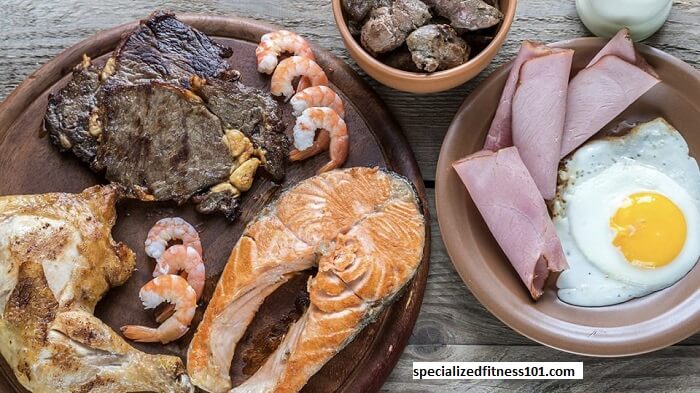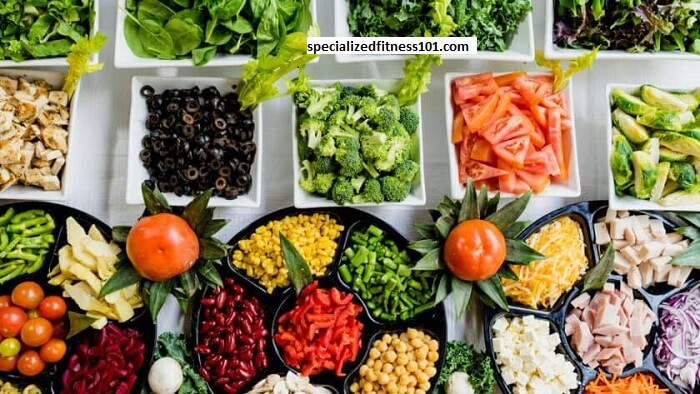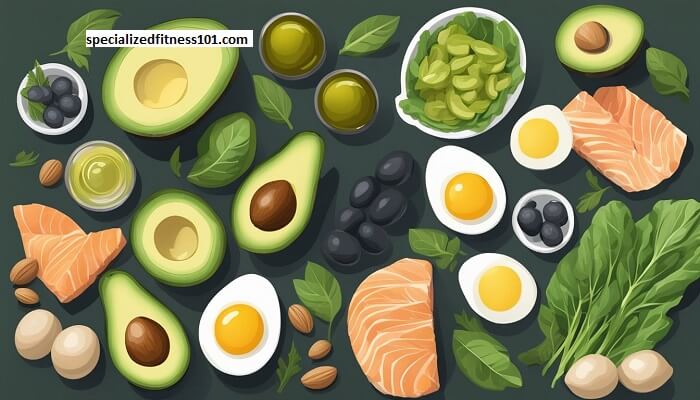The Ultimate Keto Diet Food List: Your Complete Guide to Low-Carb Living:
The ketogenic, or “keto” diet, has become one of the most popular diets in recent years, with a growing interest in its weight-loss potential, improved energy, and many other health benefits. In simpler words, it is a high-fat diet with a low amount of carbohydrates, designed to enter into a state of ketosis: when the body burns fuel from fat rather than from carbohydrates. To follow a keto diet most effectively, one needs to know what foods to eat and those that are not to be consumed. This report will present a complete listing of foods that can be put into a keto diet combined with some tips on creating a meal plan and some preparation.

Understanding the Basics of the Keto Diet:
Before presenting the food diet, one must understand the basic concept of the keto diet macronutrient breakdown. Generally, this diet is composed of fats at 70-75% of total calories from fat, proteins at 20-25%,
Carbohydrates: 5-10% (usually 20-50 grams of net carbs daily)
This restriction on your carbohydrate intake puts a stranglehold on the inflow of these into the body and makes it begin to use its stores of fat to manufacture energy while producing ketones in greater amounts in your liver.
Keto Diet Basics Essentials: Keto Diet:
Here are some more classifications and a few relevant products that are prominent in most keto diets.
1. Oils and Fats
Fats make up most of a ketogenic diet, and here are some excellent sources:
Avocado Oil: Rich in monounsaturated fats; can be used for cooking.
Coconut Oil: Contains MCTs that may potentially increase ketone production
Olive Oil: This is best used for salad dressings or as a finishing oil over vegetables.
Butter and Ghee: High in fat but can add flavor to any dish during cooking
Lard and Tallow: Animal fat that can serve as a frying and roasting agent
Nut Butter: Almond, macadamia, peanut butter; make sure unsweetened
2. Proteins
Choose good protein sources for the maintenance of muscles:
Meat: Beef, pork, lamb, chicken, and turkey.
Fish: Fatty fish such as salmon, mackerel, sardines, and trout.
Eggs: Good source of protein and fat with rich vitamins.
Shellfish: Shrimp, crab, and oysters.
Cheese: Hard cheese is cheddar, gouda, and parmesan which are low in carbs.
3. Low-Carb Vegetables
Non-starchy vegetables give the nutrients and fiber without much carbs:
Leafy Greens: Spinach, kale, arugula, and lettuce.
Cruciferous Vegetables: Broccoli, cauliflower, Brussels sprouts, and cabbage.
Zucchini and Squash: Great for substituting higher-carb grains and pasta.
Peppers: Bell peppers and jalapeños add flavor without many carbs.
Mushrooms: Low in carbs and rich in flavor.
4. Nuts and Seeds
These are great snacks and sources of healthy fats:
Almonds: High in monounsaturated fats and vitamin E.
Walnuts: Good source of omega-3 fatty acids.
Chia Seeds: Rich in fiber, to be used in making keto puddings
Flaxseeds: Ripe with omega-3s. They can also be ground up to give nutrition.
Pumpkin Seeds: Rich in magnesium and zinc
5. Dairy
Full fat is good with a keto diet
Heavy Cream-For use with coffee, sauces, or soups
Greek Yogurt-Pick the varieties that have full fat without sugar and preservatives. It contains all proteins as well, with less content of carbohydrates
Cottage Cheese
6. Beers
Hydration is key: water, bone broth, tea, and coffee, all without added sugar, of course; sparkling water with added lemon or lime.

Sweeteners:
On the no-no list is sugar; the following are low in carbs:
Stevia A natural, no-calorie sweetener.
Erythritol Sugar alcohol with almost no effect on blood sugar.
Monk Fruit Sweetener Excellent substitute with zero calorie count.
8. Condiments/Seasonings
Season foods without adding carbs: –
Mustard Check the packaging for sugar-free. End –
Hot Sauce Add as much heat as you like make sure it is not sugar-based.
Mayonnaise Use only sugar-free, full-fat mayo.
Herbs/Spices Basil, oregano, garlic powder, and cinnamon add all this flavour flavor adding any carb content.
Foods To Avoid:
To stay in ketosis, avoid and limit the following foods
Sugar-based foods: candy, pastries, and sugar-containing beverages.
Grains and Starches: Bread, pasta, rice, and potatoes.
High-Carb Vegetables: Corn, peas, and carrots.
Fruits: Most of the fruits are rich in sugar, but limited serving sizes of berries can be used.
Low-fat foods: Many low-fat products are sugar-rich.
How to Plan Your Meals:
Pre-planning of your meals will keep you in control and avoid carb-based food.
Batch Cook: Prepare large quantities of keto-friendly food for days when you will be very busy.
Snack Smart: Make nuts, cheese, and boiled eggs available for grabbing when you feel peckish.
Read Labels: Always read the hidden sugars and carbs in packaged food.

Sample Meal Ideas:
To give you an idea of how you can mix and match these foods in your diet, here are some sample meals:
Lunch: Grilled chicken salad with mixed greens, olive oil dressing, and feta cheese.
Dinner: Baked salmon with roasted Brussels sprouts and cauliflower rice.
Snacks: A handful of almonds or a cheese stick.

